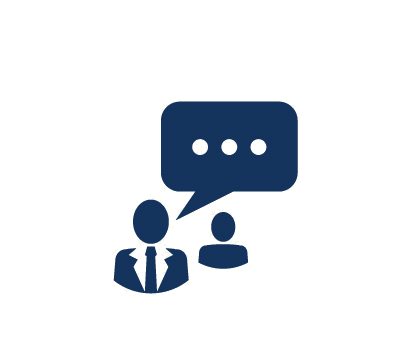Duration: 5 Days
In this course, you'll build on the knowledge and scripting experience gained in the prerequisite UCCXD course by exploring more advanced techniques in scripting as well as the overall Unified Contact Center Express (CCX) v8 functionality. You'll learn to implement features that extend the functionality of Unified CCX using many of the tools available in the Premium version of the product. You will also invoke behaviors that involve web-based applications, such as Web Callback Option and Leave a Message in Queue.
In this course, there is a major focus on hands-on labs so you can fully grasp scripting and best practices as well as troubleshooting and repairing broken scripts.
- Exclusive Super Lab: On the last day of class, you'll follow a typical real-world deployment project from design to development and through deployment. Incorporating lessons from UCCXD and UCCXA, this lab provides both IVR and ACD challenges and gives you a better understanding for contact center projects, as well as a blue print for your own solution.
- Exclusive Trouble Ticket Labs: Four exercises let you troubleshoot and repair broken scripts after you've completed the primary lab exercise. You'll upload broken scripts into the system and debug them to uncover common scripting mistakes.
- Optional Labs: We've added two optional lab exercises in support of Automatic Speech Recognition and Text-to-Speech in which you'll learn how to use the snu.aef script to upload spoken names for users.
What You Will Learn
- Configure and deploy Cisco Unified Contact Center Express v8.0 with CUCM 8.0
- Install and configure all components of CCX to include the operating systems, IP IVR and IP ACD, CCX applications, and client tools such as the CCX Application Editor
- Implement a call center application
- Best practices for script design
- Configure advanced features of resource-based and skills-based routing
- Explore resource- and skills-based routing, with caller options for overflow queues and different caller options
- Implement a script that measures Contact Service Queue (CSQ) metrics, such as Expected Wait Times and Agents who are logged on, and then make decisions on call flow
- Create call-back scripts based upon queue times, including passing enterprise data to the new call
- Explore integration with Microsoft SQL Server to store sessions in an external SQL database for retrieval at a later time
- Implement scripts using web triggers for an application instead of a calling trigger
- Troubleshoot broken scripts using the Debug system in CCX Editor
- Implement and configure your own scripts based on customer requirements
- Investigate the use of Time and Holiday Operations and build your own prompt recorder and emergency recorder scripts
- Implement call options for Caller e-mail and Scheduled Callback
- Implement call options for Overflow Queues using queue and call statistics
Audience
Systems engineers and other technical professionals who are responsible for advanced CCX scripting and queuing
Prerequistes
- UCCXD or equivalent experience
- Significant familiarity with UCCX
Course Outline
1. IPCC Express Overview/Review
- Components
- Definitions
- The Call Flow
- The Debug Process
- Triggered Debugging
- Non-Triggered Debugging
2. Troubleshooting Concepts
3. Common Utilities
- Recording Script
- Emergency Message Recording Script
- Time-of-Day and Holiday Routing Subflows
4. Basic ACD Routing
- Review ICD Steps
- Build a Helpdesk Script
5. Common Good Practices
- Scripting for Good Prompt Management
- Proper End/Terminate Scripting
- Scripting for Subflow Debugging
- Abandon Rates
- Exception Handling
- Using the Default Script
- Check Agent Availability Before and After Entering Queue
- Check for Call Aborting Before Transferring Call
6. Database Queries
- Database Setup
- Database Steps
7. Skills-Based Routing
- Add Skills-Based Routing
- Route Based on Caller Input and Database Query
8. Advanced ACD Routing
- Overflow Routing
- Conditional Routing Based on Agent Availability and Queue Statistics
9. Non-Queuing ACD Callback Methods
- Leave Message for Callback via E-Mail
- Leave Recorded Message for Callback via E-Mail
- Callback Caller when Queue Times Decrease
10. Session Management and Enterprise Data Review
- Set Up Enterprise Data
- Implement Session Management
- Callback Caller When Agent is Available
11. Advanced ACD Callback Options
- Leave Message for Agent
- Callback Caller when Agent Selected
- Scheduled Callback
12. Web Contacts Overview
- Request Agent and Callback via Web
- Queue E-Mail to an Agent via Web
13. Automatic Speech Recognition and Text-To-Speech Overview
14. Using Auto Attendant
- User Steps
- Spoken Name Generation and Upload
- Name Grammar Generation
- Number Dialing
- Name Dialing
15. ICM (High-Level) Overview
- Integrating IPCC Express with ICM
Course Labs
Lab 1: Topology and Deployment
Wire the UCCXA classroom network and image the CallManager and CCX servers for each cluster. Install and configure CallManager. After completing this lab, no additional wiring is required for any later labs.
Lab 2: CCX Installation
Install and configure CCX using the default aa.aef script. This lab features a full, fresh installation of the CCX software and full configuration for the default script to operate.
Lab 3: Telephony and Media
Provision the CCX Server and CUCM Server with CTI Ports and standard telephony and media dialog groups.
Lab 4: Prompt Recorder Script
Build a script that can record up to ten system prompts and automatically upload them to the repository. Add this script to the Repository, configure an application for this script, and test the script.
Lab 5: Emergency Message Recorder
Evaluate and upload an Emergency Message recorder which can be customized for the need to record prompts on a regular basis. Use Reactive Debug to step through the script.
Lab 6: Help Desk Script
Install and evaluate an advanced Help Desk script that will be used as a basis for all other lab exercises and advanced scripting concepts. Use Reactive Debug to step through the script.
Lab 7: Best Practices and Database Access
Configure your server for ODBC Database access and enable the CCX Database subsystem. Explore the use of three specific database steps used in scripts to extract information from a SQL database using the Structured Query Language.
Lab 8: Enhanced - Advanced ACD Solutions
Add to the Help Desk script and explore advanced concepts such as skills-based routing, resource testing, gathering reporting metrics, and consideration of alternative call-routing options. At the end of the lab, you'll practice troubleshooting with our exclusive Trouble Ticket system.
Lab 9: Enhanced - Caller Options for E-Mail and Callback
Create options for the caller for leaving a recorded message (which is sent as an e-mail to an agent), or set up a callback script for the caller to be called when the queue wait times are more reasonable. At the end of the lab, you'll practice troubleshooting with our exclusive Trouble Ticket system.
Lab 10: Enhanced - Callback with Enterprise Data
Create script options that allow the caller to be called back while tracking Enterprise Data retrieved from an external SQL database server. At the end of the lab, you'll practice troubleshooting with our exclusive Trouble Ticket system.
Lab 11: Leave Message in Queue and Scheduled Callback
Modify the script such that the caller can leave a message in the queue to be played to the Agent with a Callback after the Agent is selected. Set up a workflow to write a record out to the SQL database.
Lab 12: Enhanced - Web Page Trigger for Scheduled Callback
Leverage previous labs using the scheduled callback. In this lab, however, you will initiate the script using a web page filled out by the end user instead of a call into the application. Throughout the lab, you'll practice troubleshooting with our exclusive Trouble Ticket system.
Lab 13: Exclusive - All Day Super Lab
In this Super Lab, you will be presented with a real-world deployment project that incorporates lessons from both courses and provides both IVR and IPCC challenges. Follow a typical project based on real-world experience from design to development and through deployment. Upon completion of the lab, you'll have a better understanding for a contact center project as well as a blueprint for your own solution.
Lab 14: ASR and TTS (Optional)
Modify a script to implement automatic speech recognition (ASR). Implement both implicit and explicit confirmation techniques. Create a script to use text-to-speech (TTS).
Lab 15: Spoken Names (Optional)
Configure the aa.aef script to recognize spoken names when triggered.


